
MARS STRANGE BIO-LIFE 3b
Report #148
October 5, 2008
This report is a supplement to the
previous Report 147
where that evidence was presented in the browser compatible .jpg imaging
to facilitate verification. Here the same evidence is presented but drawn
from the JP2 imaging with its closer views. The down side is that the source
official JP2 imaging is not browser compatible. That means it requires the
use of the proprietary IAS Viewer and JAVA installed which may prevent many
from being able to readily verify the JP2 evidence behind me.
Sometimes this type of evidence appears as parallel very light reflective
ridge forms, sometimes as frozen appearing waterfalls, sometimes as irregularly
round shaped pit formations, and sometimes with the look you'll see here as
another appearance variation of the ridge form
evidence. The giant size of the evidence, the higher resolution MRO imaging,
and the absence of image tampering obfuscation on it combines to bring in
some very informative detail.

The above first image demonstrates a distant context view of a massive field of tightly packed ridge forms extending from left to right horizontally across scene. It also includes many lesser but still massive ridge form sites in the surrounding terrain. This is some of the most dramatic looking evidence but please also note the very light reflective patches around in the terrain in the above scene. Most of these are also forms of bio-life but different that this higher detail imaging is now revealing to us but more on that later. For now lets take some progressively closer looks at this field of strange life in the next 2nd through 7th following images.
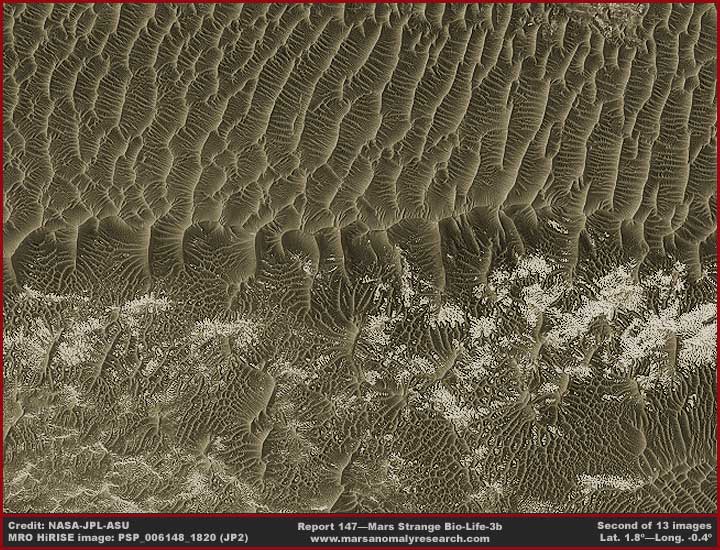
This second image demonstrates a bit closer view of the center area of the massive and densely packed bank of ridge forms along with a closer look at the evidence in the terrain in front of it. The dense bank of ridge forms suggest water is more present in this area and likely flowing enabling the larger growth. The sprawling and more spread out nature of the same growth in the image's foreground suggest more level ground and spotty water presence forcing the growth's branching runners to search it out. The much more light reflective patches are a completely different type of growth that you will get a closer look at shortly.
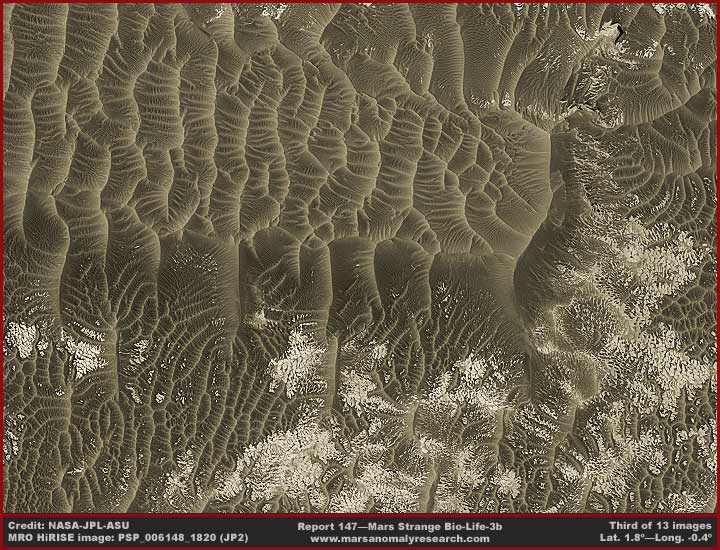
This third image demonstrates a view
of the right end of densely packed mass. It is a slightly closer view than
in the second image. It demonstrates two things. First, by seeing two side
areas of the mass, you can clearly determine that the ridge forms are substantially
covering the terrain like a small mountain range. Second, this slightly closer
view just begins to demonstrate that the light reflective portions of the
terrain are actually individual objects of uniform size and dimensions.
WARNING: A thing that some of you may experience
is that the closer one gets to the dense mass and the larger it appears, the
largest formations in the center of the mass may visually fluctuated back
and forth between a concave (inward/downward bow) and convex (outward/upward
bow). You aren't' going crazy as this is normal eye/brain confusion as the
brain tries to adjust to and interpret something unfamiliar the eye is seeing
and sometimes can't quite make up its mind.
Just remember, in the closer zoom images, the larger evidence is just a larger
version of the smaller evidence and the smaller evidence always has the concave
(inward/downward bow) appearance in the trough areas between the ridges. In
other words, the troughs are not bowed upward or domed in appearance. If you
see that, it is an illusion.
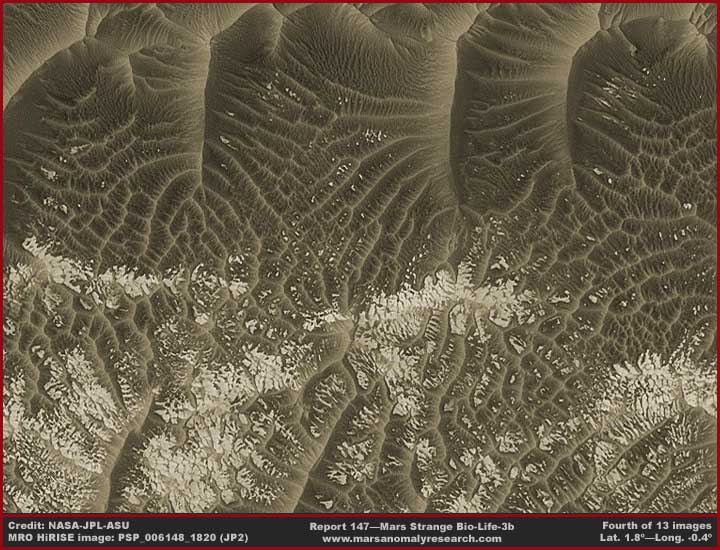
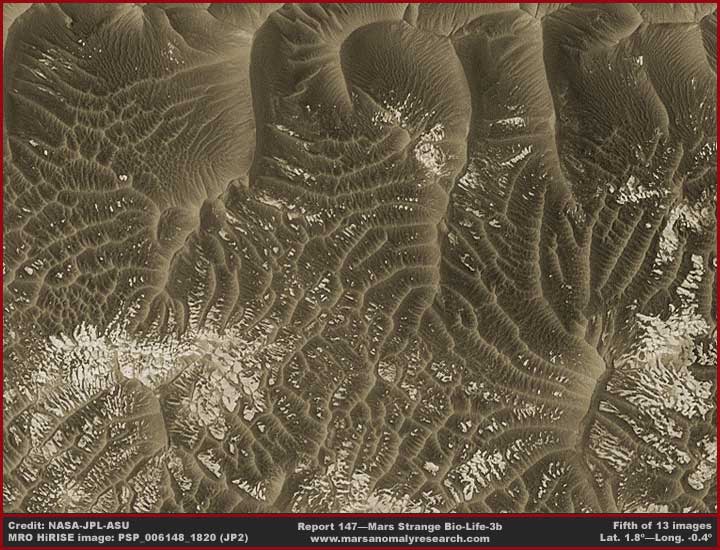
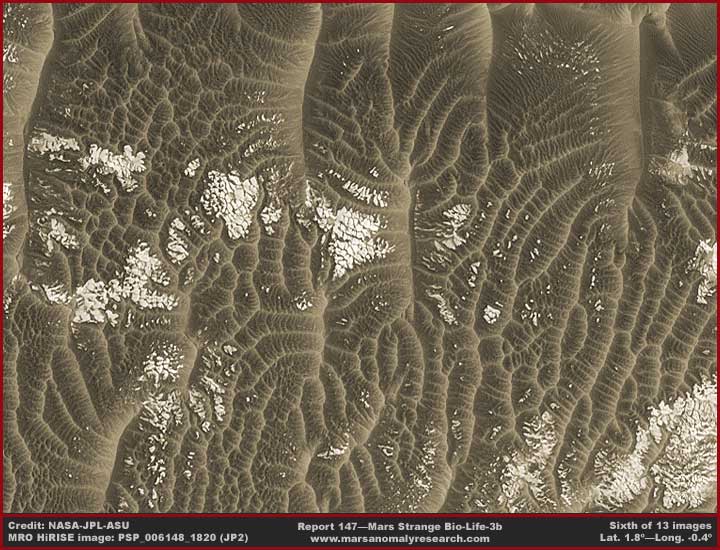

The above four 4th—7th images
demonstrate closer views of the frontal edge of the huge densely packed mass
of ridge forms. From the 4th image the view pans from left to right across
the front of the dense mass. For the most part, these four images do a good
job of not being subject too much to the concave versus convex viewing problem.
As best shown in the above 7th image, this ridge form evidence is characterized
by big main roughly parallel sharp peaked ridges. Smaller but still sizable
lesser ridges branch off of the main ridge at roughly a 90º right angle
to it. Then even smaller ridges branch off at a 90º right angle to those
and so on and mingle with others coming from the nearby big ridge system.
Now let's move on to Part 2 at the link below. In Part 1 we've examined the
same primary evidence presented in the poorer quality .jpg imaging of the
Report 147 and now with closer views here in this JP2 based report. Now let's
move on to Part 2 where we'll see some new evidence sites with some differences.
![]()